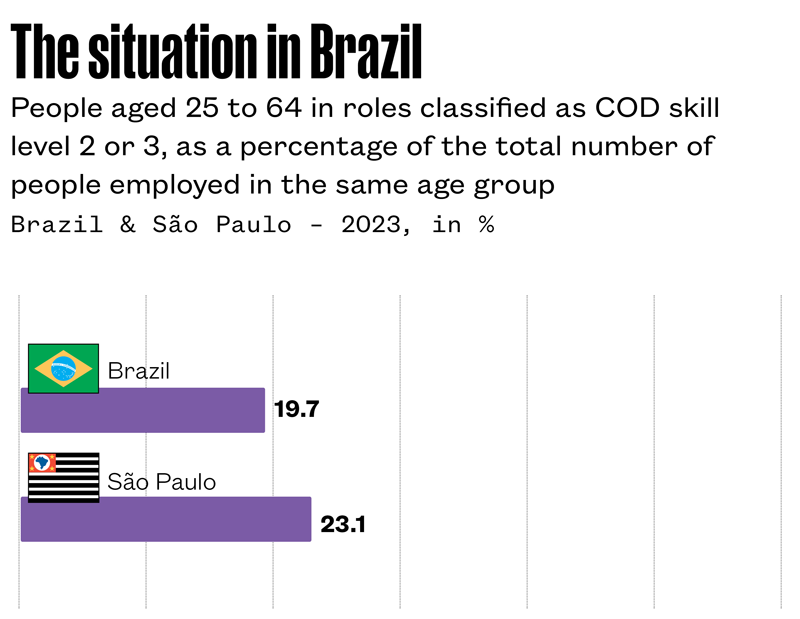- Economies with occupational structures more heavily represented by skilled occupations tend to have more complex productive structures and are therefore more likely to generate and implement innovations. This can be measured by the proportion of employed people working in occupational groups of a technical nature that require more qualifications
- Eurostat used the Canberra Group Handbook, issued by the Organization for Economic Cooperation and Development (OECD), to determine that these occupations are mostly assumed by ISCO groups 2 (professionals) and 3 (technicians and associate professionals). They correspond to groups 2 and 3 of the Brazilian Classification of Occupations (CBO) and the Classification of Occupations for Household Surveys (COD)
- To measure these groups in Brazil, information was taken from the Continuous National Household Sample Survey (PNAD), which adopts the COD for this purpose. Data provided by Eurostat were obtained for the selected countries. All figures refer to 2023 and people aged 25 to 64
- The graph to the left shows that in this age group, 39.2% of employed people in the European Union hold more qualified occupations. But there is significant heterogeneity in the selected countries: the rate varies from 55.5% (Sweden) to 20.3% (Turkey)
data
Skilled occupations and occupational structure

- In Brazil, although the number of people in such positions (more than 16 million) is comparable to Germany, they do not even account for 20% of all employed people in the age range, which is closer to the situation in Turkey
- In São Paulo, the picture is better than the national average, but far from what could be considered satisfactory

Sources Selected countries: European Statistical Office – Eurostat, extracted on 12/05/2024; Brazil and São Paulo: Continuous PNAD (microdata)/IBGE, extracted on 12/04/2024 Prepared by FAPESP / DPCTA / GIP
Republish